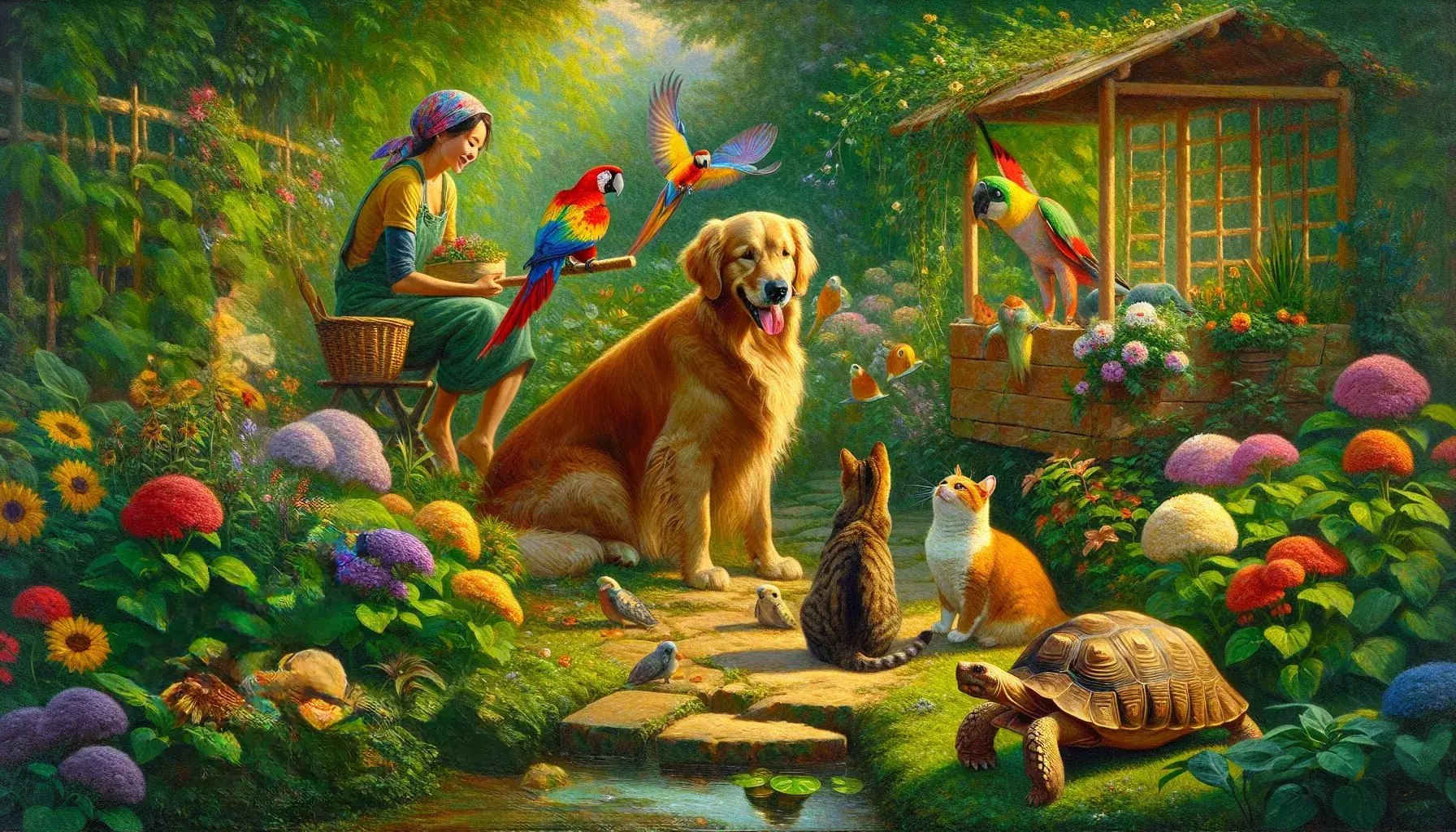The Health Benefits of Gardening for Pets: Creating a Pet-Friendly Garden Oasis

Gardening with pets can be immensely rewarding, but it's crucial to create a safe environment. When selecting plants, prioritize pet-friendly options such as marigolds, sunflowers, and pet grass. Avoid toxic plants like lilies, tulips, and daffodils, which can be harmful to pets if ingested. Incorporating raised garden beds can limit pets' access to delicate plants. Additionally, installing mulch or gravel in flower beds can deter pets from digging.
Exploring Pet-Safe Plants for a Pet-Friendly Garden
Pets need designated areas for rest and play within the garden. Providing shelters, such as cozy pet houses or shaded spots, allows pets to seek refuge from the sun or rain. Integrate pet-friendly play structures, like obstacle courses or digging pits, to stimulate their physical and mental well-being. Moreover, consider introducing sensory elements, such as wind chimes and textured pathways, to engage pets' senses while exploring the garden.
Creating Shelters and Play Areas for Pets
Gardening can serve as a bonding opportunity for pet owners and their furry companions. Involving pets in gardening tasks, such as digging holes for planting or watering flowers, strengthens the bond through shared experiences. Engaging in collaborative activities promotes trust and reinforces the human-animal bond, fostering a deeper connection between pets and their owners.
Related Article: The Untold Perks of Regular Vet Visits: Insights from the Front Line
Using Gardening as a Bonding Activity with Pets
The outdoor setting of a garden provides pets with exposure to natural elements, benefiting their overall health and well-being. Sunlight exposure supports their vitamin D production, essential for bone health. Additionally, exploring the garden encourages physical activity, aiding in weight management and reducing the risk of obesity-related health issues in pets. Furthermore, the mental stimulation of outdoor environments can alleviate stress and alleviate behavioral problems.
Ensuring a safe garden environment for pets involves implementing various precautions. Fencing the garden area helps prevent pets from wandering off and safeguards them from potential outdoor hazards. Address any potential toxicity risks, such as pesticides or fertilizers, by opting for pet-safe products. Additionally, placing pet-friendly water features, like shallow ponds or water fountains, provides pets with access to fresh water while enhancing the garden's allure.
Nurturing Pet Health Through Outdoor Environments
Gardening with pets introduces a sense of companionship and joy, fostering a shared appreciation for the natural environment. Witnessing pets explore, play, and relax in the garden creates memorable experiences. Embrace the moments of tranquility and delight as pets and nature harmoniously intertwine, enriching the daily lives of both pets and their owners.
Related Article: The Silent Sufferer: Unveiling The Hidden Pain in Pets
Implementing Safety Measures in Your Garden
Incorporating these pet-friendly garden practices not only enriches the outdoor experience for pets but also strengthens the bond between pet owners and their beloved companions. TailsTalks Blog encourages pet owners to explore the wonders of gardening with their pets and create a harmonious, pet-friendly garden oasis.
Frequently Asked Questions
When creating a pet-friendly garden, consider using plants like marigolds, sunflowers, and pet grass. These options are safe for pets and can enhance the garden's beauty. Avoid toxic plants such as lilies, tulips, and daffodils, which can harm pets if ingested. Prioritizing pet-safe plants ensures a secure environment for your furry friends to enjoy.
To create engaging play areas for pets in the garden, provide designated spaces with shelters like cozy pet houses and shaded spots. Incorporate pet-friendly play structures such as obstacle courses or digging pits to stimulate their physical and mental well-being. These features allow pets to explore, play, and relax comfortably in their outdoor environment.
Gardening offers numerous health benefits for pets by providing exposure to natural elements. Sunlight helps produce vitamin D, essential for bone health, while exploring the garden encourages physical activity that aids weight management. Additionally, the mental stimulation from outdoor environments can reduce stress and alleviate behavioral issues, contributing to overall well-being.






